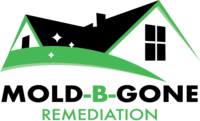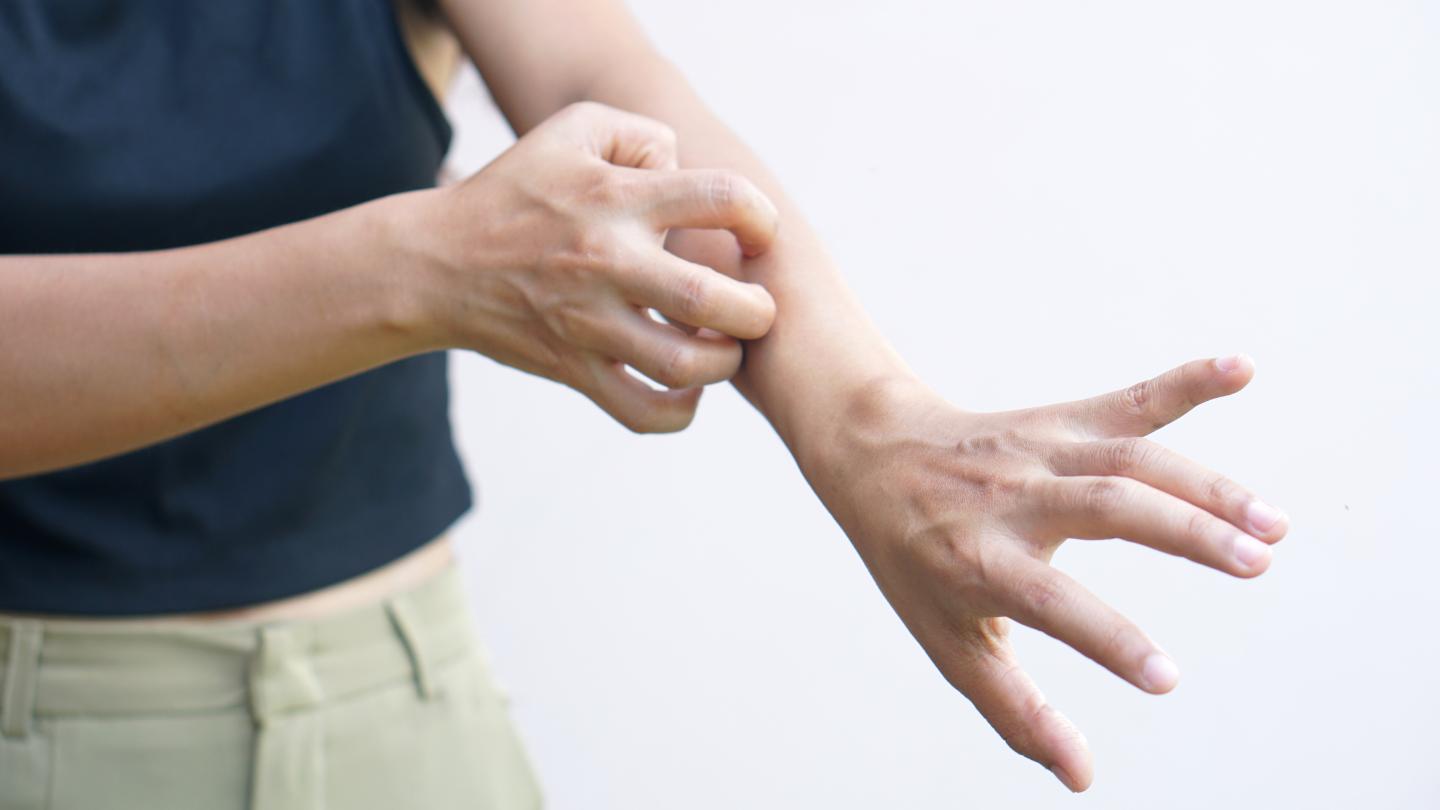Mold rashes often affect individuals exposed to mold, making identification challenging. These rashes typically appear as itchy, red, and swollen patches of skin, sometimes accompanied by bumps, scales, or blisters. Understanding their visual characteristics and causes is crucial for effective treatment and prevention. This article will explore what mold rash looks like and the underlying factors that contribute to their development.
Key Takeaways
- Mold rashes manifest as itchy, red, swollen areas on the skin, often accompanied by symptoms like coughing and irritated eyes, indicating mold allergies.
- Diagnosis of mold rash involves reviewing medical history and performing allergy testing to confirm reactions to mold exposure, which informs effective treatment strategies.
- Preventing mold rash requires managing humidity and ventilation in living spaces, alongside regular inspections for mold growth to minimize exposure.
Identifying a Mold Rash
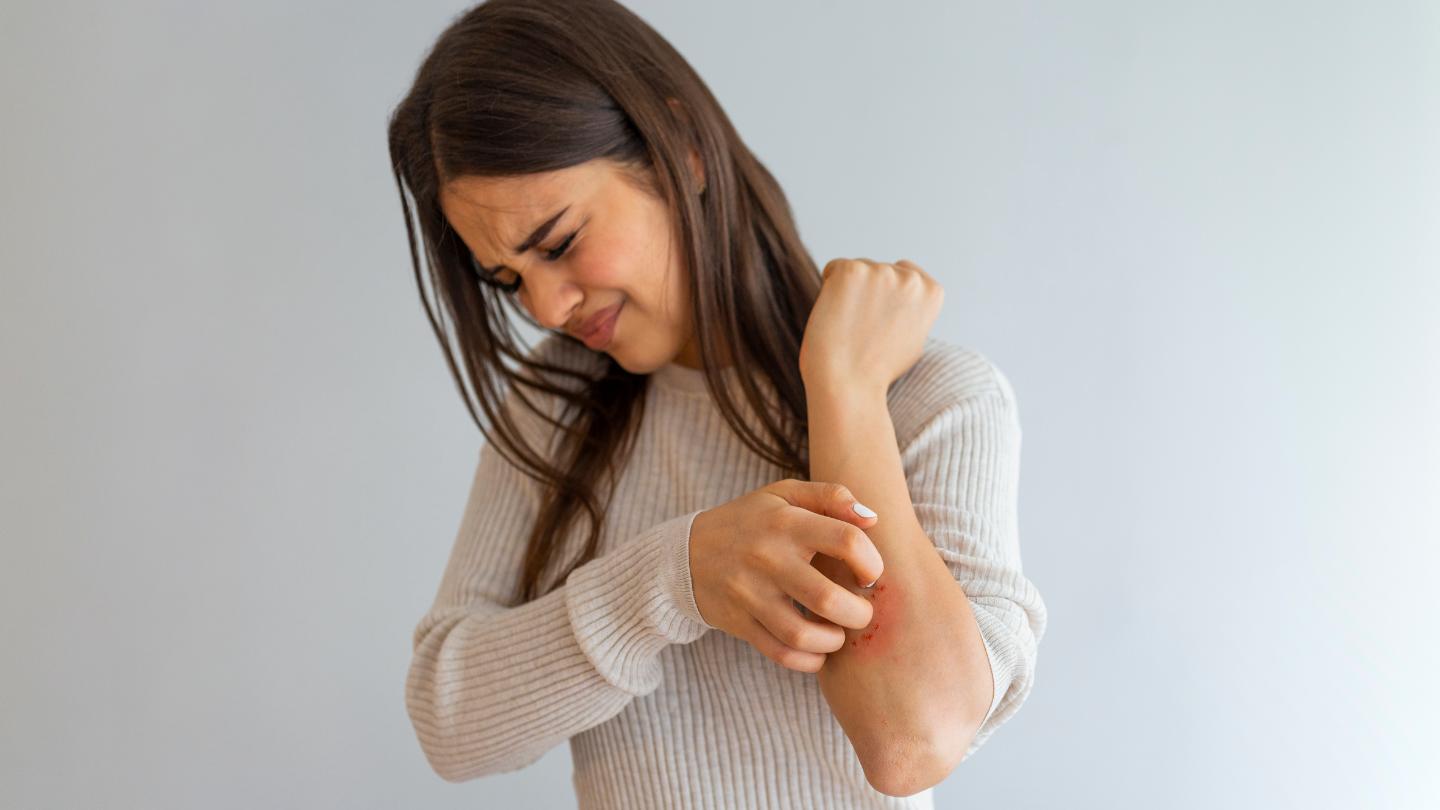
It can be difficult to distinguish a mold rash from other skin issues due to its similarity in appearance. Prompt identification is important, especially for individuals exposed to mold in infested environments, as it can worsen existing conditions like eczema.
Being aware of the distinctive characteristics and symptoms of a mold rash is essential. This awareness helps differentiate it from other skin conditions and ensures timely medical attention.
Visual Characteristics of a Mold Rash
Exposure to mold often leads to skin rashes characterized by an itchy, red, warm, and swollen appearance. Symptoms may also include bumps, scaling, or blistering on the affected areas. Prolonged exposure or contact with harmful varieties like toxic black mold can intensify these reactions.
In severe cases, individuals may notice scaliness, persistent itching, dryness, and inflamed skin patches. Blisters signal increased irritation, requiring immediate attention to prevent further skin damage. Early recognition and intervention are crucial for managing mold-related rashes and avoiding complications.
Common Symptoms Accompanying Mold Rashes
Mold allergies can trigger a combination of symptoms, including skin rashes, coughing, and wheezing due to respiratory reactions to mold spores. Persistent exposure to mold may cause chronic coughing and sinus drainage from ongoing irritation.
Individuals with mold allergies often experience eye irritation, described as a gritty sensation or increased sensitivity to light. Additional symptoms may include persistent runny noses and frequent headaches, sometimes escalating to migraines. When these symptoms appear alongside a skin rash, they strongly suggest the need for medical intervention to address a potential mold allergy.
Causes of Mold Rash
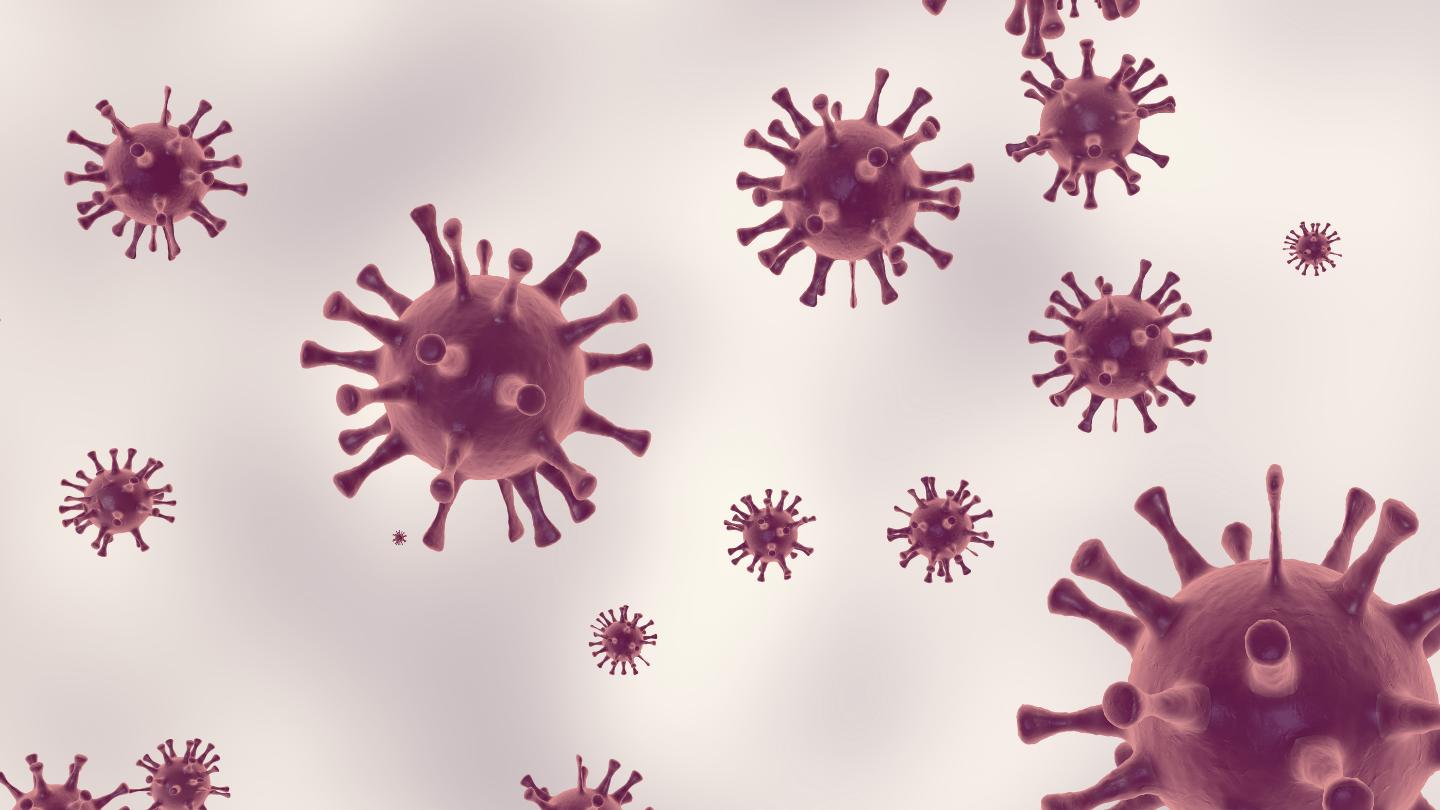
Understanding the causes of mold rash is key to prevention and treatment. A mold-associated skin rash is an allergic condition caused by exposure to mold. The immune system’s overreaction to airborne mold spores triggers allergy symptoms, which often manifest as rashes on the skin. These rashes may appear as brown or pink patches with small, raised bumps that can leak fluid. They are often accompanied by raw, sensitive, and itchy skin.
Mold allergies are diagnosed through a thorough review of medical history, physical examinations, and specialized allergy tests. These tests determine if the rash is related to mold exposure, helping healthcare providers develop effective treatment plans. Understanding these causes is essential for managing and preventing mold rash effectively.
How Mold Spores Trigger Allergic Reactions
Mold spores are microscopic particles that become airborne and can be inhaled. For individuals with heightened sensitivity, these spores can trigger an allergic response. Once inhaled, the immune system recognizes mold as harmful and releases histamines, resulting in allergy symptoms such as skin rashes.
The severity of reactions to mold exposure varies greatly. Some individuals experience mild symptoms, while others may develop severe conditions, such as allergic bronchopulmonary aspergillosis (ABPA), when exposed to Aspergillus species. Understanding how mold spores trigger these adverse responses is crucial for prevention and treatment.
Environmental Factors Contributing to Mold Growth
Mold growth thrives in environments with high moisture levels and poor ventilation. Areas such as bathrooms, kitchens, and crawlspaces are especially vulnerable as they provide the damp conditions mold spores need to multiply.
Outdoor spaces can also harbor mold, particularly in decaying vegetation. However, indoor mold poses a greater risk to health and living conditions. Addressing these factors through moisture control and improved airflow can significantly reduce mold development and related hazards.
Diagnosing Mold Rash
Diagnosing a mold rash can be challenging because its symptoms often resemble other allergic reactions. Seeking medical attention for unusual skin outbreaks is crucial. Rather than relying on medical diagnostics like skin prick tests or IgE level examinations, addressing mold rash begins with reducing exposure to mold in the environment.
Mold-B-Gone’s professional mold remediation services focus on identifying and eliminating mold at its source. By effectively removing mold and addressing contributing factors such as excess humidity and poor ventilation, we help create a healthier environment that minimizes the risk of allergic reactions, including skin rashes.
Complete Medical History and Physical Exam
A detailed medical history plays a critical role in diagnosing mold allergies. Healthcare providers look for signs of prior mold exposure and related symptoms. During a physical examination, physicians assess the skin for rashes and examine other symptoms associated with mold exposure. This step is essential for ruling out other conditions and confirming whether mold is the cause of the reaction.
Allergy Testing Methods
Allergy testing methods like skin prick and blood tests can identify mold allergies, but rather than spending extensively on hospital visits and treatments, consider calling us for professional mold inspection and removal. Our services address the root cause, ensuring a healthier environment and alleviating mold allergy symptoms effectively.
Treating Mold Rash
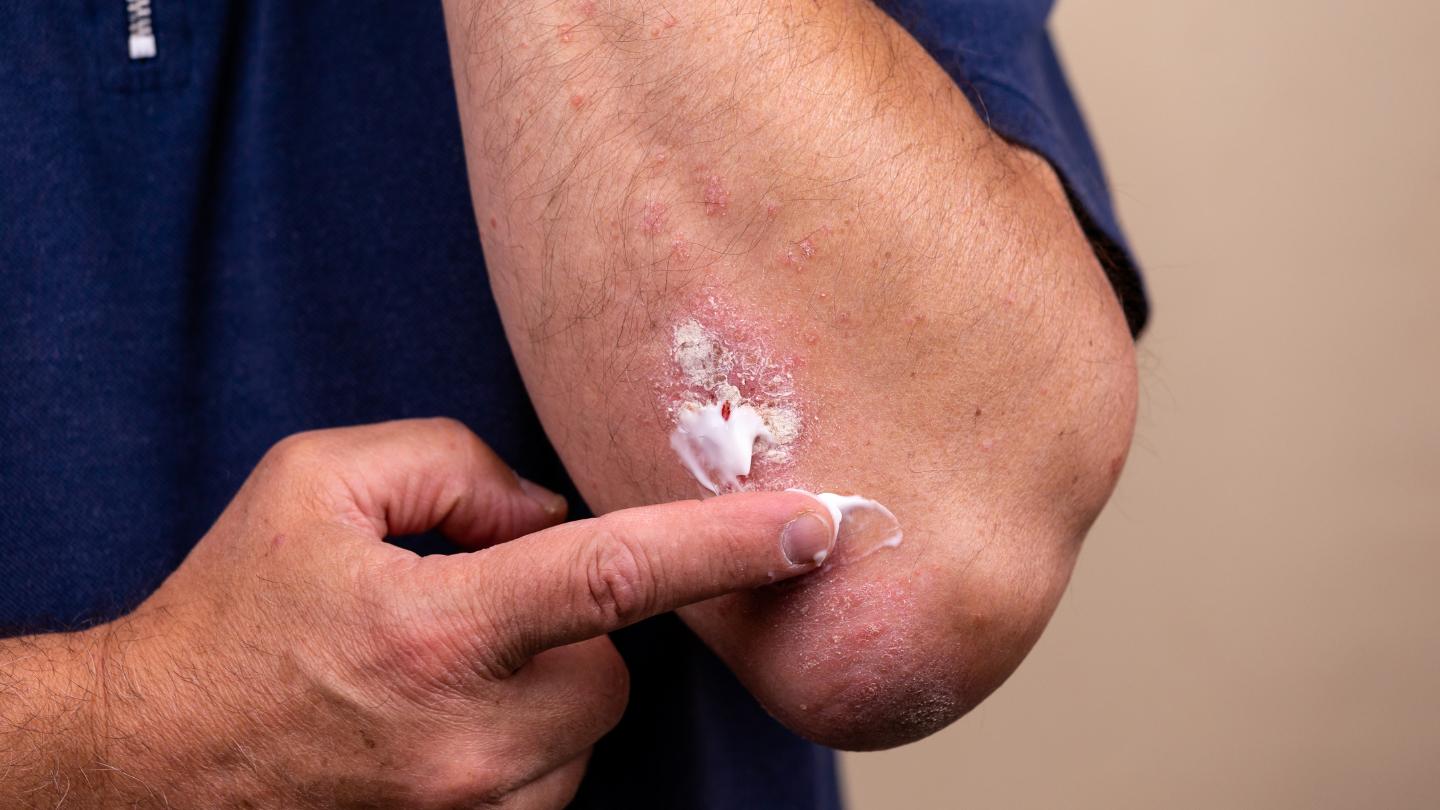
Addressing a mold rash typically involves a combination of medications and home remedies to alleviate symptoms and address the underlying cause. In addition to medical treatments, home remedies can provide relief. Using both approaches offers a comprehensive treatment strategy, targeting immediate symptoms and the root cause of the condition.
While some may seek medical remedies for mold rash, the most effective way to address the root cause is to eliminate exposure to mold. Mold-B-Gone specializes in thorough mold removal and prevention strategies to reduce health risks associated with mold exposure. By ensuring your home is free from mold, we help alleviate ongoing symptoms and promote long-term health. If you’re experiencing persistent reactions, professional mold inspection and remediation are critical steps to prevent further issues.
Preventing Mold Rash
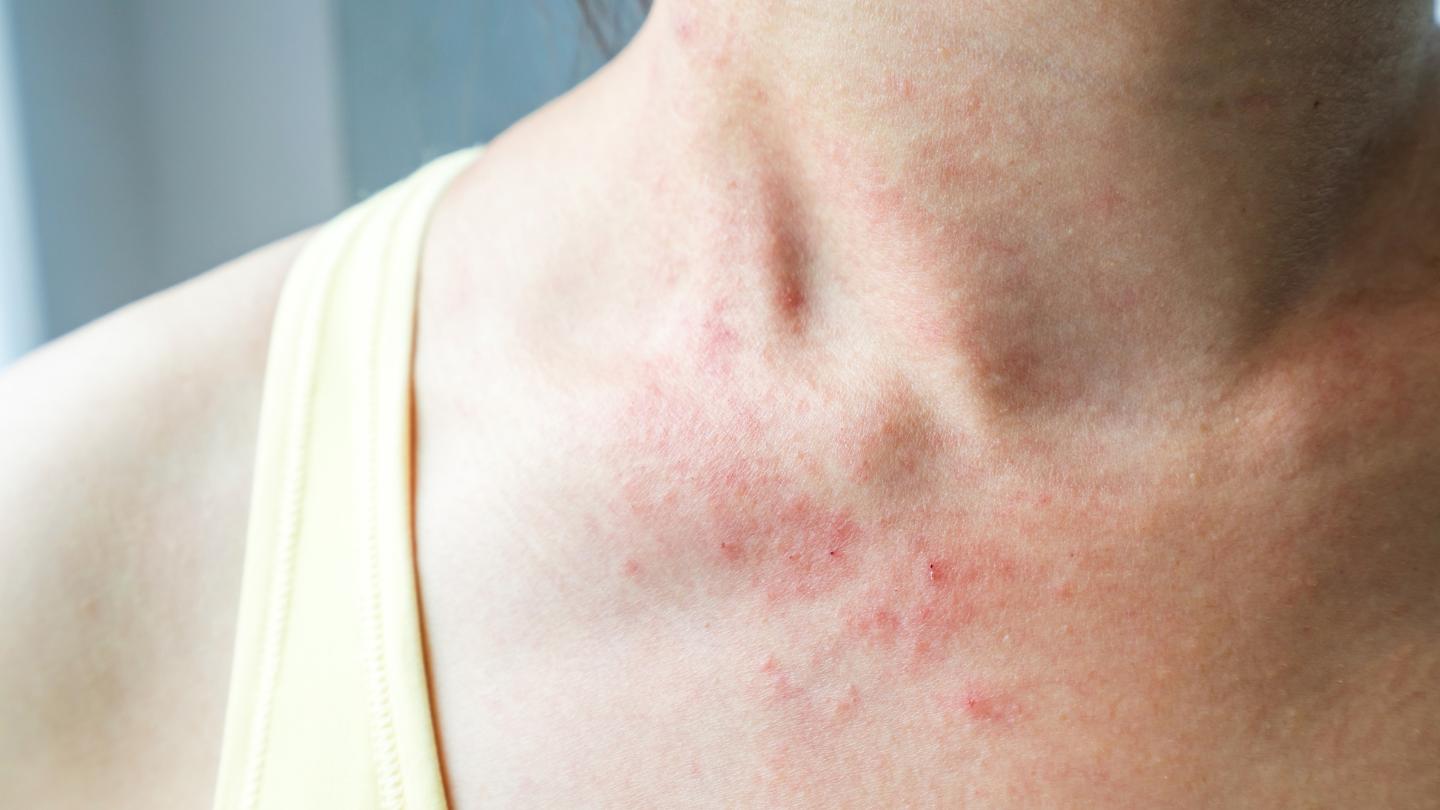
To prevent mold rash, it’s essential to control your environment and limit exposure to mold. Key steps include:
- Using exhaust fans to improve airflow.
- Maintaining indoor humidity below 60%.
- Ensuring proper air exchange in living areas.
- Regularly inspecting for water leaks or damage that could promote mold growth.
By regulating moisture levels and enhancing ventilation, you can significantly reduce the risk of mold development and related skin irritations. These preventive practices are crucial for maintaining a healthy and mold-free living space.
Reducing Mold Inside Your Home
To address mold-related health concerns, the best approach is proactive prevention and remediation. Mold-B-Gone recommends the following steps:
- Schedule regular mold inspections, especially in moisture-prone areas like basements, bathrooms, and kitchens.
- Use dehumidifiers to maintain indoor humidity below 50%, preventing mold growth.
- Repair water leaks promptly to eliminate moisture sources that encourage mold proliferation.
- Ensure proper ventilation in high-moisture areas with the use of exhaust fans.
These measures, combined with Mold-B-Gone’s professional remediation services, help create a mold-free environment that minimizes health risks and promotes well-being.
Outdoor Mold Prevention Tips
Outdoor mold levels are highest during windy or damp conditions. To minimize exposure, consider the following tips:
- Keep windows closed during high mold spore counts or windy days.
- Spend less time outdoors when mold levels are elevated.
- Regularly remove fallen leaves and decaying vegetation from your yard.
- Ensure gutters are clean and free of debris to prevent water buildup.
By maintaining a tidy outdoor space and limiting exposure during peak mold seasons, you can reduce the risk of mold-related health issues.
Risks Associated with Mold Exposure
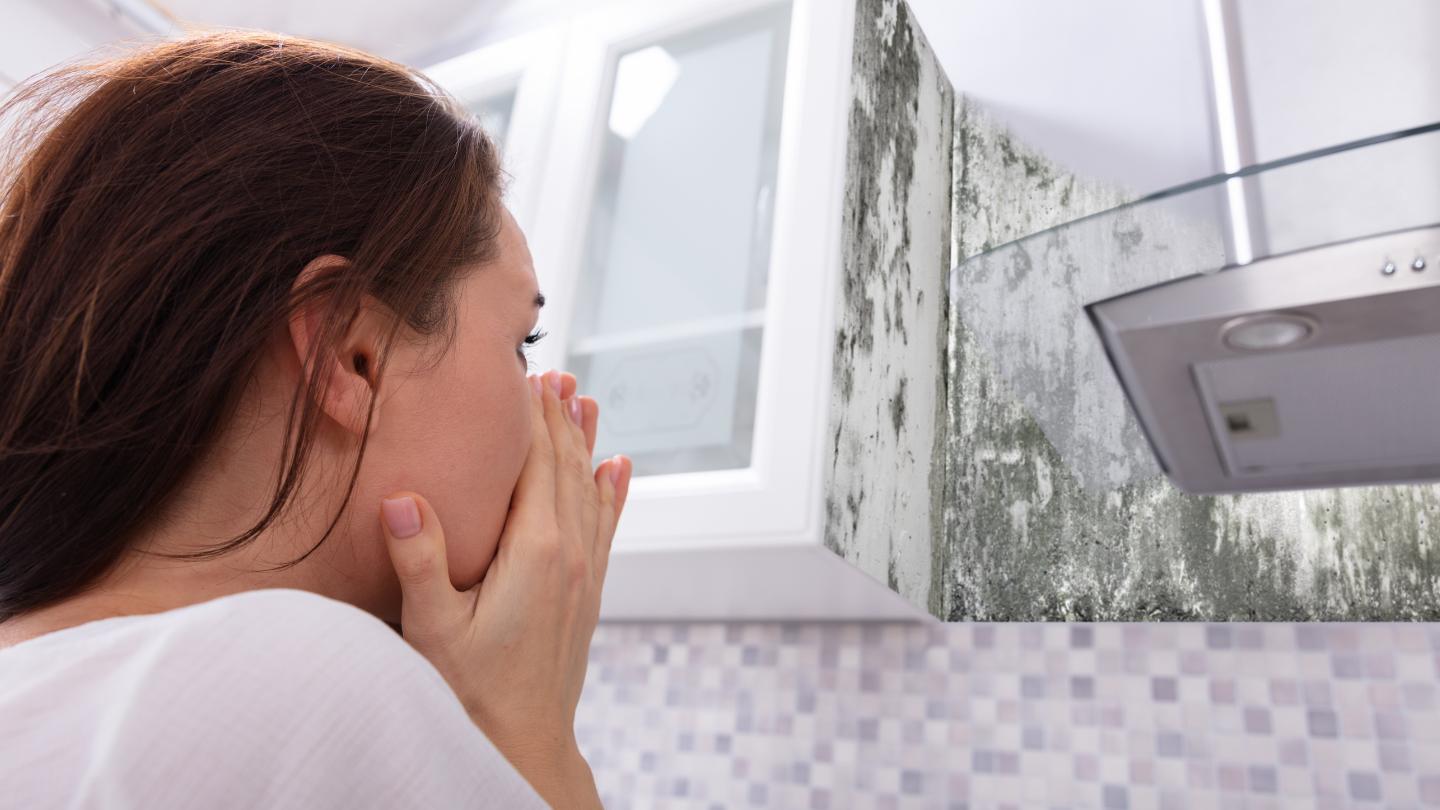
Exposure to mold poses significant health risks, particularly for sensitive individuals. Common symptoms include wheezing, shortness of breath, and exacerbated allergies or asthma symptoms. Prolonged exposure may lead to chronic respiratory issues.
Those with weakened immune systems face greater risks, including infections caused by mold. Mold exposure can also trigger irritation and allergic responses, potentially resulting in severe health complications. Understanding these risks underscores the importance of preventing and addressing mold exposure promptly.
Mold Hypersensitivity Syndrome
Mold hypersensitivity syndrome occurs when individuals develop severe allergic reactions to mold exposure. One condition linked to this syndrome is allergic bronchopulmonary aspergillosis (ABPA), caused by an adverse reaction to Aspergillus mold. ABPA affects 1-2% of people with asthma, highlighting the connection between mold sensitivity and respiratory health.
Genetic predisposition also plays a role in mold hypersensitivity. Research indicates that approximately 28% of people carry genes that increase their susceptibility to mold-related health problems. Managing exposure to mold is critical for individuals with asthma or heightened sensitivity to reduce the risk of severe allergic reactions and related complications.
Severe Reactions and Mycotoxins
Prolonged mold exposure can lead to serious health risks due to the production of harmful substances like mycotoxins. These toxic compounds, produced by certain molds, can cause respiratory problems and other health complications. Rather than focusing on specific technical conditions, it’s crucial to emphasize prevention. Mold-B-Gone’s expertise in mold remediation ensures the safe and effective removal of toxic mold, reducing exposure to harmful substances and safeguarding your health.
Summary
Recognizing mold rashes, their causes, and treatments is vital for individuals experiencing mold allergies. Skin symptoms such as red patches, swelling, or blistering, combined with respiratory issues or migraines, may signal an allergic reaction to mold. Early detection and addressing environmental factors like damp areas can help in effective prevention and treatment.
Mold-B-Gone, the mold remediation experts serving Atlanta, is dedicated to helping you reduce indoor humidity and minimize exposure to outdoor molds, significantly lowering the risk of mold rashes. For those already affected, we provide a blend of professional mold remediation services and home remedies that offer symptom relief and foster recovery. Our services come with a written 12-month guarantee to ensure your home remains a safe and healthy environment. Don’t let indoor environmental issues compromise your health and comfort. Contact us today for professional solutions backed by years of expertise. We provide comprehensive services including Duct Cleaning, Eviction Clean Outs, IAQ Testing, Mold Remediation, Water Damage Flood Restoration, Whole House & Room Sanitizing, and many other specialized services to ensure your space is clean, safe, and healthy. Our experienced team is ready to address your concerns and deliver lasting results.
Frequently Asked Questions
What are the common visual signs of a mold rash?
Common visual signs of a mold rash include itchy, red, warm, and swollen patches on the skin. Bumps, scaling, or blisters may also be present. If you notice these symptoms, it is advisable to seek medical attention promptly.
How can I prevent mold growth inside my home?
To prevent mold growth inside your home, maintain indoor humidity below 50%, use exhaust fans in moisture-producing areas, and regularly inspect for water leaks. These steps are crucial for a healthy, mold-free environment.
What are the severe health risks associated with mold exposure?
Mold exposure can lead to severe respiratory symptoms, such as shortness of breath and wheezing, and systemic illnesses caused by mycotoxin exposure. Prompt mold removal is essential to protect your health.
What home remedies can help treat mold rash?
Effective home remedies for mold rash include applying aloe vera for its soothing properties, using tea tree oil as an antifungal agent, taking oatmeal baths to calm irritation, and using cool compresses to reduce itching and inflammation. These remedies can complement medical treatments.
How can mold allergy be diagnosed?
Mold allergy is diagnosed through a detailed medical history, a physical examination, and allergy testing, including skin prick tests and blood tests. These diagnostic tools ensure accurate identification of mold allergies for effective treatment.
